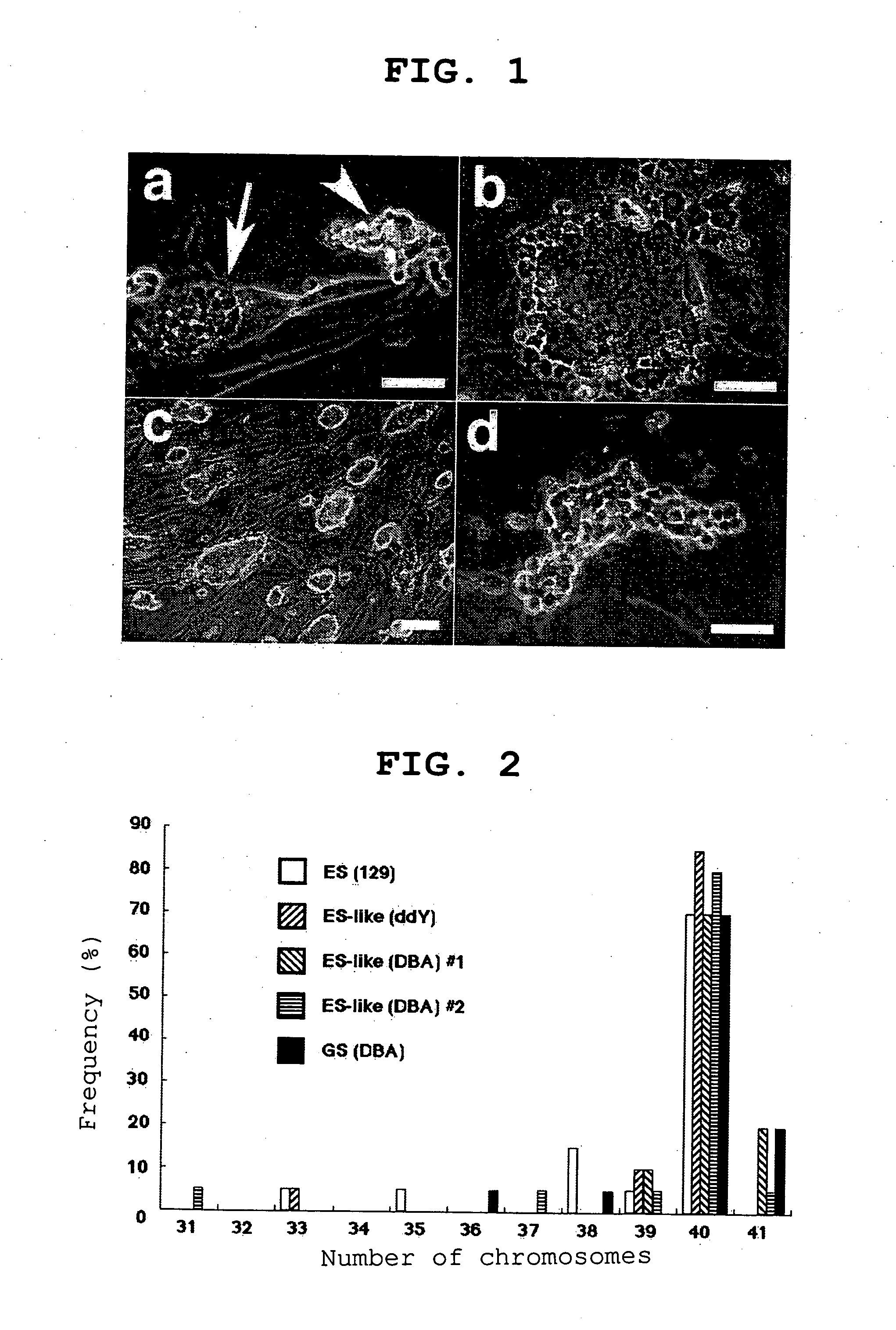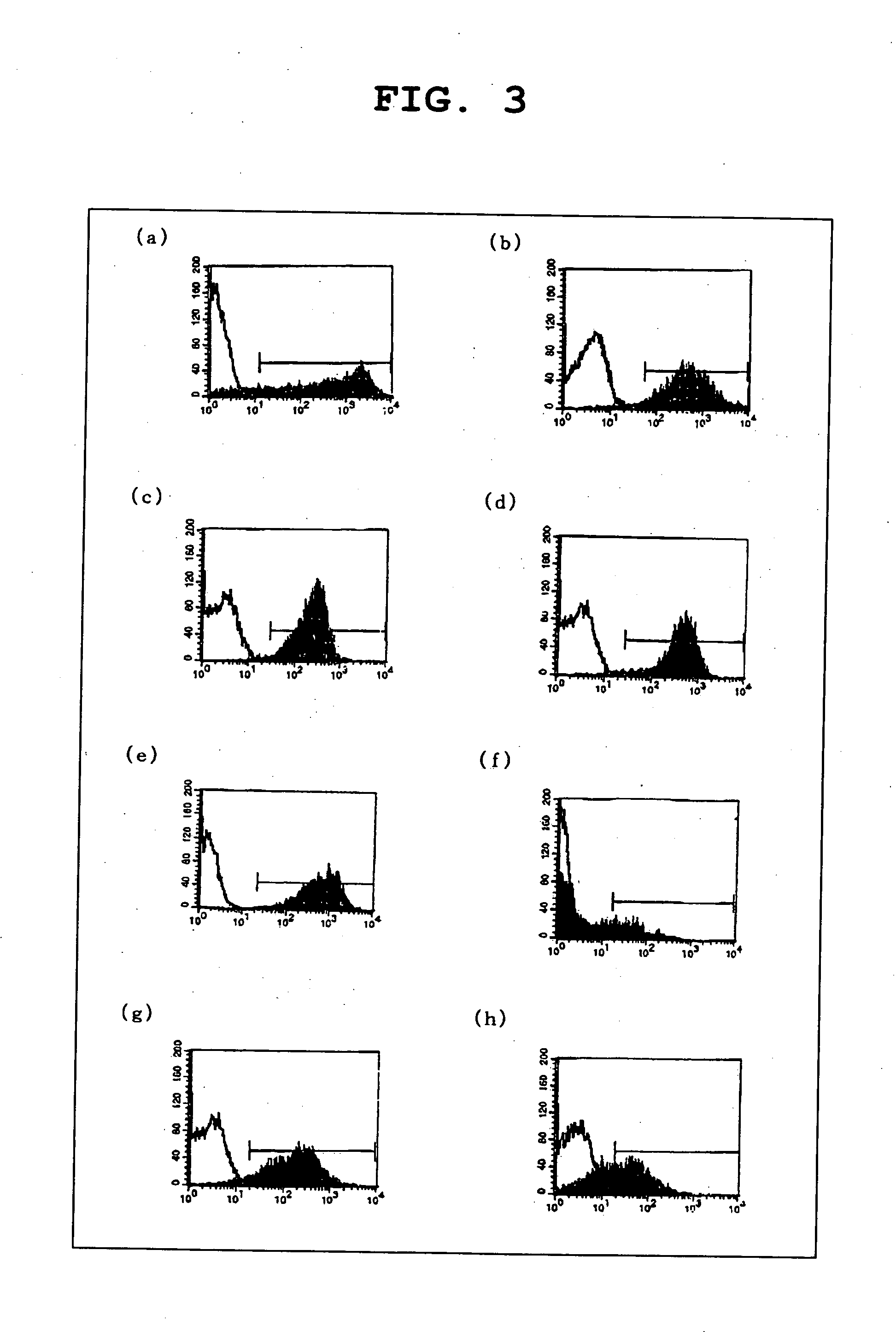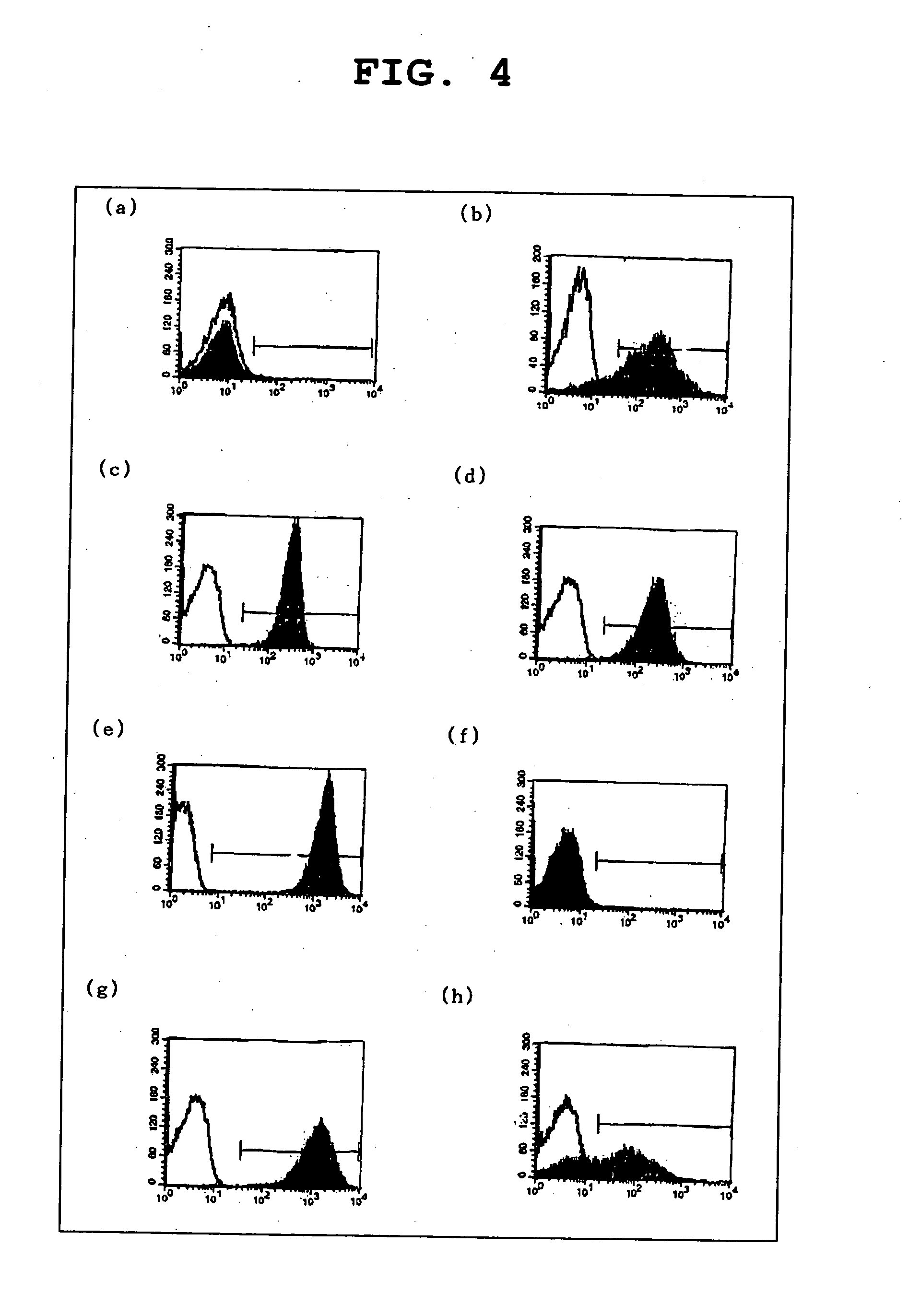Process For Producing Multipotential Stem Cell Origination In Testoid Cell
a technology of testoid cells and stem cells, which is applied in the field of producing pluripotent stem cells using testoid cells, can solve the problems of not being able to establish pluripotent cells from normal postnatal gonads
- Summary
- Abstract
- Description
- Claims
- Application Information
AI Technical Summary
Benefits of technology
Problems solved by technology
Method used
Image
Examples
examples
Materials and Methods
(Cell Culture)
[0206] Testis cells were collected from newborn (0-8 days old) ddY mice, DBA / 2 mice or transgenic mouse line C57BL6 / Tg14 (act-EGFP-Osby01) that was bred into DBA / 2 background (designated Green) (provided by Dr. M. Okabe, Osaka University). Because these Green mice have the expressed the EGFP gene in substantially all cell types, it is possible to track the cells derived from the mice can be tracked with the fluorescence of EGFP as the indicator.
[0207] For some experiments, testis cells were collected from a newborn p53 deficient mouse in ICR background (Oncogene, vol. 8, p 3313-3322, 1993).
[0208] Testis cells were collected by two-step enzymatic digestion using collagenase (type IV, Sigma) and trypsin (Invitrogen).
[0209] That is, the mouse testis was extirpated, the tunica albuginea was removed in PBS, and incubation was performed in Hunks' balanced solution containing 1 mg / ml collagenase (type I) at 37° C. for 15 minutes with shaking as appr...
PUM
| Property | Measurement | Unit |
|---|---|---|
| concentration | aaaaa | aaaaa |
| culture temperature | aaaaa | aaaaa |
| time | aaaaa | aaaaa |
Abstract
Description
Claims
Application Information
 Login to View More
Login to View More - R&D
- Intellectual Property
- Life Sciences
- Materials
- Tech Scout
- Unparalleled Data Quality
- Higher Quality Content
- 60% Fewer Hallucinations
Browse by: Latest US Patents, China's latest patents, Technical Efficacy Thesaurus, Application Domain, Technology Topic, Popular Technical Reports.
© 2025 PatSnap. All rights reserved.Legal|Privacy policy|Modern Slavery Act Transparency Statement|Sitemap|About US| Contact US: help@patsnap.com



